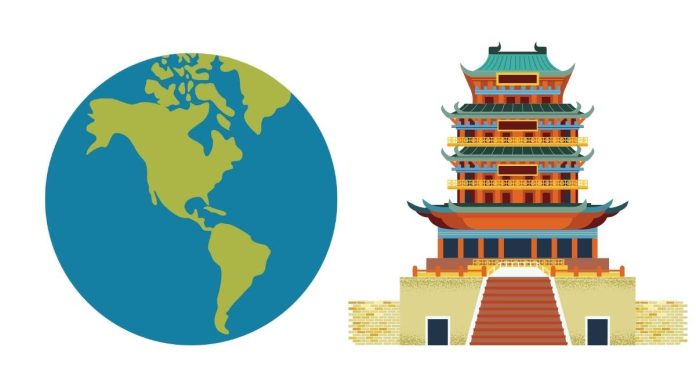Asia is the largest and most populous continent in the world, home to a rich tapestry of cultures, languages, and geographical wonders. With 49 recognized countries, Asia spans a vast area, offering a diverse range of landscapes—from the deserts of the Middle East to the tropical rainforests of Southeast Asia, and the majestic mountains of the Himalayas. In this blog post, we’ll explore the countries of Asia, providing a comprehensive list and a glimpse into the continent’s vast diversity.
Divisions of Asia
Asia can be geographically and culturally divided into several regions:
- East Asia: Includes countries like China, Japan, South Korea, and North Korea.
- Southeast Asia: Consists of countries like Thailand, Vietnam, Indonesia, and Malaysia.
- South Asia: Home to countries like India, Pakistan, Bangladesh, and Sri Lanka.
- Central Asia: Includes Kazakhstan, Uzbekistan, and Turkmenistan.
- Western Asia (Middle East): Includes countries like Saudi Arabia, Turkey, Iran, and Iraq.
- Northern Asia: Generally consists of Russia’s Asian part.
Each of these regions has its own unique cultural, historical, and political characteristics, contributing to the vast richness of the continent.
A Complete List of Asian Countries
Here’s a list of the 49 countries located in Asia:
East Asia
- China
- Japan
- South Korea
- North Korea
- Taiwan (Disputed status, claimed by China)
- Hong Kong (Special Administrative Region of China)
- Macau (Special Administrative Region of China)
Southeast Asia
- Brunei
- Cambodia
- Indonesia
- Laos
- Malaysia
- Myanmar (Burma)
- Philippines
- Singapore
- Thailand
- Timor-Leste (East Timor)
- Vietnam
South Asia
- Afghanistan
- Bangladesh
- Bhutan
- India
- Maldives
- Nepal
- Pakistan
- Sri Lanka
Central Asia
- Kazakhstan
- Kyrgyzstan
- Tajikistan
- Turkmenistan
- Uzbekistan
Western Asia (Middle East)
- Armenia
- Azerbaijan
- Bahrain
- Cyprus
- Georgia
- Iraq
- Israel
- Jordan
- Kuwait
- Lebanon
- Oman
- Palestine
- Qatar
- Saudi Arabia
- Syria
- Turkey
- United Arab Emirates
- Yemen
Cultural and Geopolitical Significance of These Countries
Asia is not only the largest continent in terms of size, but also the most culturally diverse. The countries listed above have varied languages, religions, customs, and histories. For instance:
- China is the world’s most populous country, with over 1.4 billion people. It has a rich history dating back thousands of years and is known for its ancient civilization, the Great Wall, and the Forbidden City.
- India is the world’s second-most populous country and has a diverse mix of languages, religions, and cultures. It is known for its ancient heritage, Bollywood, and significant contributions to philosophy, mathematics, and science.
- Japan is famous for its technological advancements, rich cultural traditions (like tea ceremonies and samurai culture), and beautiful natural landscapes.
- Saudi Arabia is the birthplace of Islam and home to the religion’s two holiest cities, Mecca and Medina, attracting millions of Muslim pilgrims every year.
The Economic Powerhouses of Asia
Asia is home to some of the world’s largest and fastest-growing economies:
- China and Japan are the second and third largest economies globally, while India is rapidly growing and is expected to become the world’s largest economy in the future.
- South Korea, Singapore, and Hong Kong are known for their advanced technology and financial services sectors.
- United Arab Emirates and Qatar have seen significant growth due to oil reserves and are global players in the energy market.
Diverse Landscapes and Natural Wonders
Asia boasts an incredibly diverse range of landscapes:
- The Himalayas in South Asia, including Mount Everest, the world’s tallest mountain, draw climbers and adventurers from around the globe.
- The Great Wall of China in East Asia is an ancient marvel that stretches over 13,000 miles across northern China.
- Southeast Asia’s tropical rainforests, particularly in countries like Indonesia and Malaysia, are known for their biodiversity and unique ecosystems.
- The deserts of Saudi Arabia and Iran, as well as the central Asian steppes, represent the continent’s arid regions.
Conclusion
Asia is a continent of remarkable diversity, from its vast array of countries to its myriad languages, religions, and cultures. Each country brings its unique contributions to the global stage, whether through technological advancements, historical heritage, or natural beauty. Understanding the countries of Asia and their distinct characteristics is crucial not only for geography enthusiasts but also for those involved in business, politics, and international relations.
As the world continues to become more interconnected, the significance of Asia in shaping global dynamics—be it in trade, politics, or culture—continues to grow. Whether you are planning a trip, researching a specific region, or simply curious about the world, knowing the countries of Asia is a great starting point for exploring this fascinating continent.


